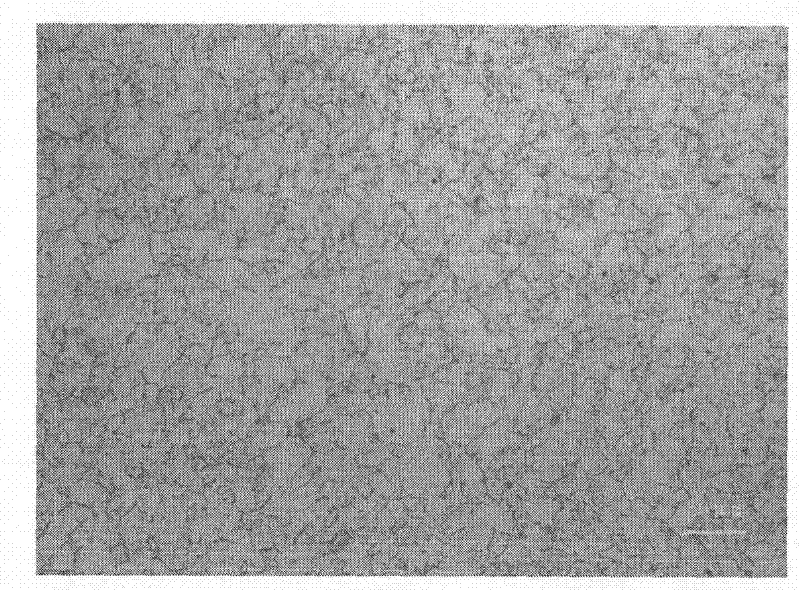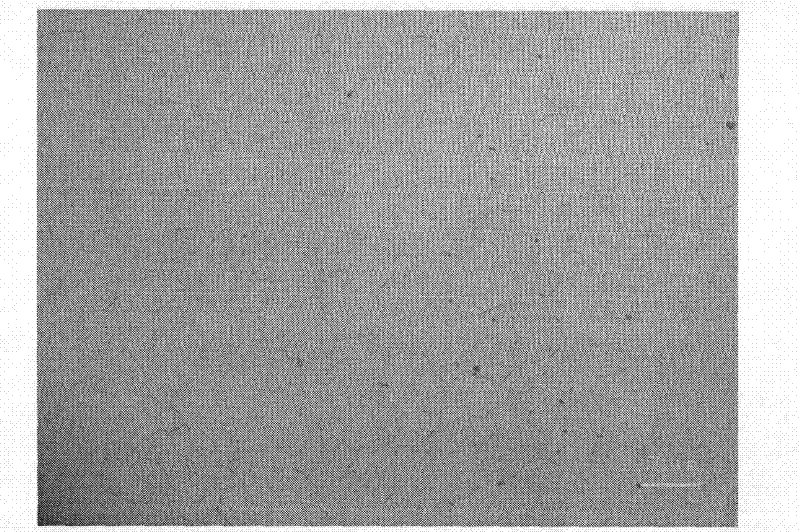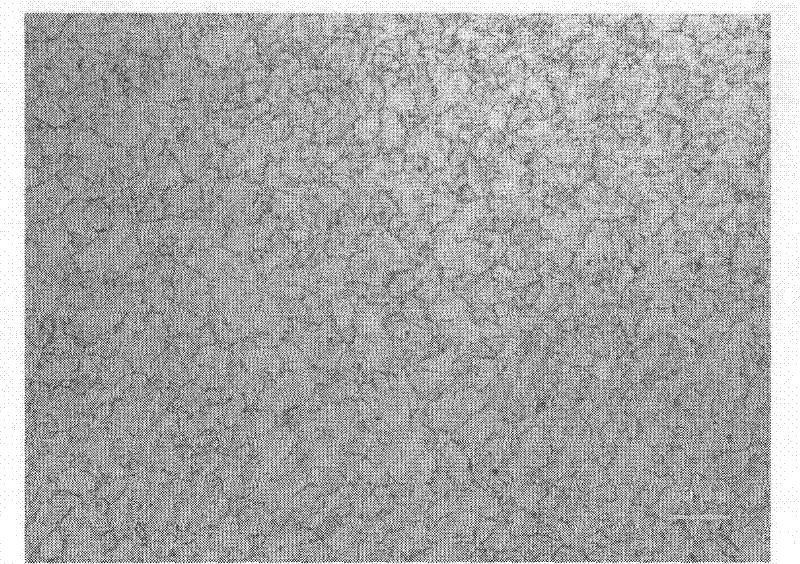Method for displaying austenite grain boundary of low-carbon micro-alloy steel
A technology of austenite grain boundaries and alloy steel, applied in the field of physical detection, can solve problems such as low efficiency and long erosion time, achieve reasonable control of process parameters and ensure product performance
- Summary
- Abstract
- Description
- Claims
- Application Information
AI Technical Summary
Problems solved by technology
Method used
Image
Examples
Embodiment 1
[0019] The chemical composition of the sample is by weight percentage: C: 0.045%, Si: 0.195%, Mn: 1.62%, P: 0.008%, S: <0.002%, Nb: 0.06%, Cr: 0.19%, Mo: 0.19% , Ni: 0.21%, Ti: 0.011%, Alt: 0.03%, N: 0.0040%, belonging to low-carbon microalloyed steel;
[0020] The specific erosion method is:
[0021] (1), sample preparation: after quenching, the iron oxide scale on the surface of the sample with a size of 20 mm × 15 mm × 15 mm was ground off, and then finely ground on metallographic sandpaper with a grain size of 240, 400, 600, 800, and 1000, Grinding and polishing on a polishing machine should ensure that the polished surface of the sample is free from any scratches, pits, pits, stains and other defects.
[0022] (2) Preparation of etchant and erosion method: Put a small beaker of φ60mm×70mm containing 80ml of distilled water into a large beaker of φ90mm×120mm filled with water (200mL), and heat it in a constant temperature and timing water bath First, put 2.5g of picric a...
Embodiment 2
[0024] The chemical composition of the sample is by weight percentage: C: 0.075%, Si: 0.038%, Mn: 1.16%, P: 0.001%, S: 0.002%, Nb: 0.09%, Ti: 0.008%, La: 0.018%, Alt: 0.026%, N: 0.0046%, belongs to low carbon microalloy steel;
[0025] The specific erosion method is:
[0026] (1), sample preparation: prepare sample according to the method for preparing sample in embodiment 1,
[0027] (2), etchant preparation and erosion method: put a small beaker of φ60mm×70mm with 80ml of distilled water into a large beaker of φ90mm×120mm with 200mL of water, and heat it in a constant temperature and timing water bath. Put 2.5g of picric acid and 1g of seagull brand shampoo into a small beaker of φ60mm×70mm for heating, when the indicated temperature is 38°C, add 0.4ml of xylene with a concentration of 78% and 0.5g of copper chloride and stir , when the indicated temperature is 50°C, add 0.3ml of hydrochloric acid with a concentration of 80% and 0.3ml of hydrofluoric acid with a concentrat...
Embodiment 3
[0029] The chemical composition of the sample is by weight percentage: C: 0.062%, Si: 0.304%, Mn: 1.60%, P: 0.010%, S: 0.002%, Nb: 0.038%, Cr: 0.35%, Mo: 0.18%, Ni: 0.18%, Ti: 0.010%, B: 0.0007%, belonging to low-carbon boron-containing microalloy steel,
[0030] The method for preparing the sample The preparation of the sample and the erosion method are the same as in Example 1, wherein the proportioning of the corrosive reagent is: 2.5g picric acid, 1g Seagull brand shampoo, concentration of 0.3ml of 80% xylene, 0.5g chlorinated Copper, 0.35ml of hydrochloric acid with a concentration of 80% and 0.3ml of hydrofluoric acid with a concentration of 80%, the etching time is 20s, image 3 The austenite grains of the corroded sample were magnified 200 times under a metallographic microscope.
PUM
 Login to View More
Login to View More Abstract
Description
Claims
Application Information
 Login to View More
Login to View More - R&D
- Intellectual Property
- Life Sciences
- Materials
- Tech Scout
- Unparalleled Data Quality
- Higher Quality Content
- 60% Fewer Hallucinations
Browse by: Latest US Patents, China's latest patents, Technical Efficacy Thesaurus, Application Domain, Technology Topic, Popular Technical Reports.
© 2025 PatSnap. All rights reserved.Legal|Privacy policy|Modern Slavery Act Transparency Statement|Sitemap|About US| Contact US: help@patsnap.com



